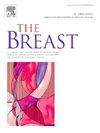乳腺癌前哨淋巴结术前造影有必要吗?回顾性病例对照研究。
IF 5.7
2区 医学
Q1 OBSTETRICS & GYNECOLOGY
引用次数: 0
摘要
目的:术中前哨淋巴结(SLN)鉴别术前淋巴显像的必要性尚不明确。本研究的目的是评估SLN成像对乳腺癌患者术中SLN检测的影响。方法:对经腋窝分期的pT1、pT2期乳腺癌患者进行回顾性、比较、单中心研究。第1组包括术前未进行SLN成像的SLN切除患者,第2组包括术前进行SLN成像的患者。组间差异分析采用t检验和卡方检验。结果:926例(平均年龄:61.45岁)患者在肿瘤与腋窝间皮下注射放射性标记纳米胶体。1组498例患者中有473例(94.98%)术中发现SLN, 2组428例患者中有415例(96.96%)术中发现SLN (p = 0.129)。2组428例患者中,淋巴显像检查发现SLN 407例(95.09%)。由于2组额外的SLN成像,从注射放射性示踪剂到手术开始的时间明显延长(p结论:在肿瘤和腋窝之间皮下注射放射性标记的纳米胶体可以提高术中SLN的检出率。术前SLN成像对术中发现无显著影响,但这是一个耗时且资源密集的过程。前瞻性研究可能为T1-2浸润性乳腺癌和临床阴性腋窝患者术前省略SLN成像提供进一步的证据。本文章由计算机程序翻译,如有差异,请以英文原文为准。
Is preoperative imaging of sentinel lymph node in breast cancer necessary? A retrospective case control study
Objective
The necessity of preoperative lymphoscintigraphy before intraoperative sentinel lymph node (SLN) identification is still unclear. The aim of the present study was to evaluate the impact of SLN imaging on intraoperative SLN detection in breast cancer patients.
Methods
Retrospective, comparative, single center study of patients with breast cancer stage pT1 and pT2 who underwent axillary staging. Group 1 included patients who underwent SLN extirpation without preoperative SLN imaging, and Group 2 included patients who underwent SLN imaging prior to surgery. Differences between groups were analyzed using T-test and chi-square test.
Results
926 (mean age: 61.45 years) patients received subdermal injection of radiolabeled nanocolloids between tumor and axilla. SLN was identified intraoperatively in 473 of 498 patients (94.98 %) in group 1, and in 415 of 428 patients (96.96 %) in group 2 (p = 0.129). Lymphoscintigraphy detected SLN in 407 of 428 (95.09 %) patients in group 2. Due to the additional SLN imaging in group 2, the time between radiotracer injection and start of surgery was significantly prolonged (p < 0.001). A reduction of applied activity from a median of 18 MBq in group 1 to a median of 12 MBq in group 2 had no negative effect on the SLN identification.
Conclusion
Subdermal injection of radiolabeled nanocolloids between tumor and axilla allowed high intraoperative detection of SLN. Preoperative SLN imaging had no significant impact on the intraoperative detection but is a time-consuming and resource-intensive procedure. Prospective studies might provide further evidence to omit preoperative SLN imaging in patients with T1-2 invasive breast cancer and clinically negative axilla.
求助全文
通过发布文献求助,成功后即可免费获取论文全文。
去求助
来源期刊

Breast
医学-妇产科学
CiteScore
8.70
自引率
2.60%
发文量
165
审稿时长
59 days
期刊介绍:
The Breast is an international, multidisciplinary journal for researchers and clinicians, which focuses on translational and clinical research for the advancement of breast cancer prevention, diagnosis and treatment of all stages.
 求助内容:
求助内容: 应助结果提醒方式:
应助结果提醒方式:


